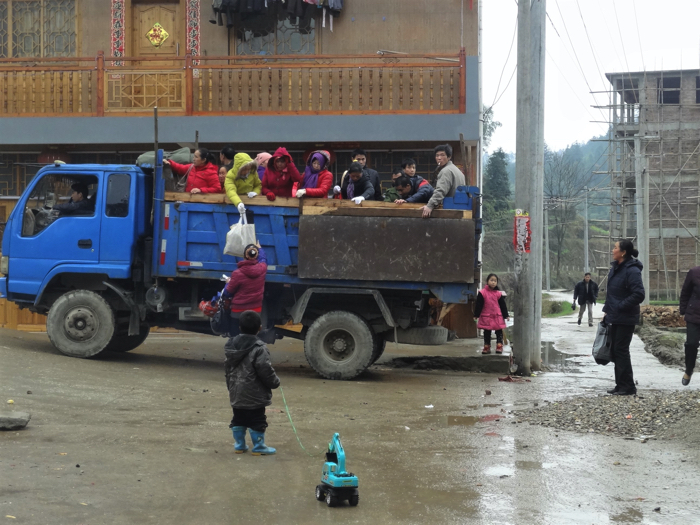- Project Leader : Horio Mio (Gifu University, Faculty of Regional Studies)
- Collaborators : Jie Huang (Aichi University, International Center of Chinese Studies)
- : Abe Tomohisa (Rikkyo University, Collage of International Communication)
- : Bao Shuangyue (Tohoku University, Graduate School of Arts and Letters)
- : Hayami Yoko (Kyoto University, Center for Southeast Asian Studies)
Outline of Research
This comparative study investigates the influence of labor and marriage migration on sending societies in China, Myanmar, and Thailand. Given the realities of globalization and regional economic disparities, circular labor migration is common in the area between modern China and neighboring Southeast Asian countries. Marriage migration has been on the rise since 2000s in the border area. At the same time, throughout history, mobility itself has always been integral to society. We focus on livelihood, religion, culture, language, and ethnicity to discuss 1) how contemporary mobility and constant absence of family members affect the local sending society and 2) how the sense of mobility has been changing vis-à-vis new economic realities. Through the cross-regional research collaboration, we aim to bridge existing research divides between Southeast Asia and China.
Description
The purpose of this study is to clarify the impacts on sending societies of labor and marriage migrations, which have progressed with the penetration of the market economy and the expansion of regional economic disparities in China, Thailand, and Myanmar. Given the realities of globalization and widening regional economic disparities, circular labor migration is common in the area between modern China and neighboring Southeast Asian countries. In China, incoming population flows exceed former regional populations of coastal urban areas, and labor shortages have become a chronic problem in inland areas as populations flow outward. In Southeast Asia, domestic labor migrations as well as migrations toward China, including for employment, study, and marriage, are increasing. Marriage migration has become more prominent in the border area since the late 2000s. Through regional comparisons, this study will examine how circular migration and the absence of family members transform the livelihoods, religions, cultures, languages, and ethnicities in local sending societies.
In contrast to previous studies that have discussed migration mainly based on economic principles, this ethnographic study reconsiders migration based on the local logic of the sending society. While migration studies focusing on the experiences of individuals abound, those examining how the accumulated experiences of migration transform society are still lacking. This study will discuss social changes due to migration using an ethnographic approach, focusing on the daily lives of local people and the local sense of families, ethnicities, and livelihoods. It will also comparatively study the differences in research trends in China, the Chinese diaspora, and Southeast Asia in order to clarify macro-political influences of China’s government on migration patterns and the sending society.
The expected results of this study are, first of all, to offer an anthropological contribution to migration studies in modern China. Despite China’s internal migration having been a hot research topic, it has been mainly discussed quantitatively, with the number of qualitative studies remaining limited. Almost all project members have been conducting long-term fieldwork in China, so we can contextualize the impacts of migration on the sending society by analyzing rich ethnographic data. Then, this study will contribute to the connection between Southeast Asian studies and China studies by discussing migration in Southeast Asia in the context of the influence of China.
 The truck starts sending villagers to migrant work after the lunar new year’s holiday |
 New forms of ancestral ritual among Dong people brought up due to the migrant work in the Han region |
